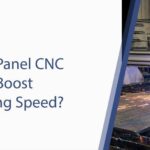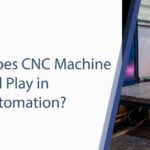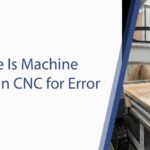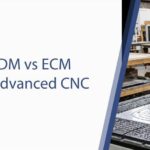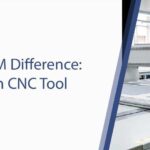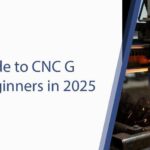In the world of modern manufacturing, where precision is not just a goal but a necessity, the ability to control complex machinery with microscopic accuracy is paramount.
From aerospace components to intricate custom furniture, the power behind this precision lies in a sophisticated system known as Computer Numerical Control, or CNC.
At the very heart of this system, acting as both its brain and its command center, is the CNC control panel.
For anyone stepping into the realm of automated manufacturing, whether as a seasoned engineer, a machine operator, or a business owner looking to upgrade their capabilities, understanding the CNC control panel is fundamental.
It is the critical interface where human intention meets machine execution, where digital designs are translated into physical reality.
This comprehensive guide will delve deep into the world of the CNC control panel.
We will deconstruct its components, demystify its operations, and explore the advanced capabilities that are driving the industry forward.
As a leader in pioneering high-end, intelligent control solutions, we at Radonix are passionate about empowering manufacturers with the knowledge and tools they need to succeed.
This article will not only serve as a foundational resource but also provide insights into the innovative technologies that are redefining the future of machine control.
What is a CNC Machine?
Before we dive into the panel itself, let’s briefly touch upon the machine it commands.
A CNC machine is a marvel of automation that uses computer-programmed instructions to control machine tools.
Unlike manually operated machines that require an operator to guide the cutting tool for every movement, a CNC machine follows a pre-programmed digital file, executing complex and repetitive tasks with flawless precision.
This technology is incredibly versatile, powering a vast array of machines, including:
- CNC Mills: Which use rotating tools to cut and drill material.
- CNC Lathes: Which rotate a workpiece against a cutting tool to create cylindrical shapes.
- CNC Routers: Commonly used for cutting wood, plastics, and soft metals.
- CNC Plasma Cutters: Which use a powerful plasma torch to slice through steel and other metals.
- CNC Laser Cutters: Which use a focused laser beam for high-precision cutting and engraving.
Each of these machines, regardless of its specific function, relies on a control panel to interpret the design and orchestrate its intricate movements.
Defining the CNC Control Panel
So, what exactly is a CNC control panel?
In the simplest terms, the CNC control panel is the Human-Machine Interface (HMI) and the central processing unit for a CNC machine.
It’s a combination of a powerful, dedicated computer (the controller) and a set of physical and/or touchscreen controls (the operator panel). Its primary purpose is to:
- Accept Input: Receive the digital instructions, typically in a language called G-code.
- Process Information: Interpret the G-code and perform complex calculations to determine the precise path, speed, and sequence of movements for the machine’s axes and spindle.
- Command Execution: Send precise electrical signals to the motors and drives that move the machine’s components.
- Provide Feedback: Display real-time information about the machine’s status, position, and active program to the operator.
Think of it as the cockpit of an advanced aircraft.
While the engines and wings do the physical work, it is the flight control system in the cockpit that allows the pilot to manage, monitor, and command the entire operation with precision and safety.
Deconstructing the Control Panel: Key Components and Their Functions
While designs vary between manufacturers, most CNC control panels share a common set of essential components.
We can broadly categorize these into the operator interface (the parts you see and touch) and the controller (the internal brain).
The Operator Interface (The Cockpit)
This is the physical front-end of the control system, designed for operator interaction.
- Display Screen: This is the operator’s window into the machine’s mind. Modern panels feature high-resolution LCD or touchscreen displays that show critical information such as the active G-code program, the real-time position of each axis (X, Y, Z, etc.), current feed rates and spindle speeds, system messages, and diagnostic alarms.
- Keypad and Keyboard: A full alphanumeric keyboard allows for Manual Data Input (MDI), where operators can type in G-code commands directly. A numerical keypad is used for entering values for tool offsets, work coordinates, and other parameters.
- Mode Selector Switch: This is a crucial rotary switch that dictates the machine’s state of operation. Common modes include:
- AUTO/MEMORY: The standard mode for running a G-code program stored in the controller’s memory.
- MDI (Manual Data Input): Allows the operator to execute single blocks of code for setup or simple tasks.
- JOG/MANUAL: Enables the use of joysticks or buttons to manually move the machine’s axes. This is essential for positioning the tool or workpiece during setup.
- EDIT: Allows the operator to make changes to the G-code program directly on the panel.
- HOME/REFERENCE: Initiates a sequence to send the machine to its “home” or zero position.
- Jog Controls: These are the tools for manual movement. They can be a joystick, directional buttons, or, most commonly, a Manual Pulse Generator (MPG). An MPG is a rotary dial that allows the operator to move an axis with incredible precision, often in selectable increments as small as a single micron (0.001mm).
- Cycle Control Buttons: These are the primary action buttons for running a program:
- Cycle Start: A large, often green button that begins or resumes the execution of the G-code program in AUTO mode.
- Feed Hold: A large, often red button that pauses the machine’s cutting movements (feed) without stopping the spindle. This is vital for clearing chips or inspecting the cut.
- Override Controls: These dials allow the operator to fine-tune the programmed speeds in real-time.
- Feedrate Override: Lets the operator decrease or increase the programmed feed rate (e.g., from 0% to 150%). This is useful if the tool is chattering or the material is cutting exceptionally well.
- Spindle Speed Override: Similarly allows for the adjustment of the spindle’s RPM.
- Emergency Stop (E-Stop): The most important button on the entire panel. This large, red, mushroom-shaped button will immediately halt all machine motion and power to the motors when pressed, ensuring the safety of the operator and the machine in a crisis.
The CNC Controller (The Brain)
Hidden behind the operator panel lies the true power: the controller.
This is a robust industrial computer responsible for the high-speed calculations that make CNC machining possible.
- Central Processing Unit (CPU): Just like in a personal computer, the CPU executes the program instructions. In a CNC controller, this CPU is optimized for the real-time mathematical calculations of motion control.
- Memory (RAM & Storage): The controller stores the G-code programs, system parameters, and offset data. Modern controllers can store hundreds of programs and utilize high-speed memory for smooth operation.
- I/O (Input/Output) Interface: This is the system that sends and receives signals to and from every part of the machine—motor drives, spindle controllers, coolant pumps, sensors, and safety interlocks.
- Motion Control Card/System: This is the specialized hardware that performs the most critical task: interpolation. It reads the G-code commands and generates a continuous stream of precisely timed electrical pulses to the motor drivers, ensuring all axes move in perfect synchronization to create straight lines, flawless arcs, and complex 3D contours.
How it All Works: From Code to Cut
Understanding the components is one thing; seeing how they work in concert is another. Here is a typical workflow for a CNC operator using the control panel:
- Design & Programming (CAD/CAM): The process starts away from the machine. A part is designed in CAD (Computer-Aided Design) software, and then a CAM (Computer-Aided Manufacturing) program is used to generate the toolpaths and create the G-code file.
- Loading the Program: The operator transfers the G-code file to the CNC control panel. In older machines, this might have been via a floppy disk or serial cable. Today, this is almost universally done via USB or, in more advanced industrial settings, a direct Ethernet (LAN) connection.
- Machine Setup: This is where the operator’s skill and the panel’s manual controls are critical.
- The operator securely clamps the raw material (workpiece) onto the machine bed.
- Using the JOG controls or an MPG, they manually move the machine to touch the tool off the edges of the workpiece.
- They then save this position as the “work offset” (e.g., G54), telling the machine exactly where the workpiece is located in space.
- They load the correct cutting tool into the spindle and measure its length, saving this value as a “tool offset.”
- Execution and Monitoring: With the setup complete, the operator closes the safety doors, selects AUTO mode, and presses the green Cycle Start button.
- The Magic of Control: The controller takes over. It reads the G-code line by line from memory. Its motion control system calculates the millions of pulses needed to move the axes along the programmed path, all while controlling the spindle speed and turning the coolant on and off. Features like advanced look-ahead allow the controller to read hundreds or thousands of blocks of code in advance, optimizing acceleration and deceleration for a smoother, faster cut.
- Operator Supervision: While the machine runs, the operator watches and listens. Using the feedrate override, they might slow the machine down for a heavy cut or speed it up in a light one, optimizing the process for quality and efficiency. If anything goes wrong, they are ready to hit Feed Hold or the E-Stop.
The Radonix Difference: Engineering the Future of CNC Control
A CNC control panel is not just a collection of components; it’s a finely tuned system where hardware and software must work in perfect harmony.
At Radonix, we are dedicated to pushing the boundaries of what these systems can do, providing manufacturers with controllers that are not only powerful and precise but also intelligent and adaptable.
Here’s what sets a Radonix control solution apart:
Unmatched Performance and Precision
The quality of your final product is directly tied to the performance of your controller. We engineer our controllers for superior results.
- High Pulse Rate: Our controllers, like the PC-Smart 3AS, can deliver up to 100,000 pulses per second. This high resolution allows for incredibly fine and precise control over motor movements, which is critical for high-speed machining and achieving a flawless surface finish.
- S-Curve Acceleration: Abrupt starts and stops (jerk) can cause machine vibration, reduce accuracy, and increase mechanical wear. Radonix controllers employ an advanced S-Curve acceleration profile, which smoothly ramps the velocity up and down. This results in faster cycle times, better surface quality, and longer machine life.
- Large FIFO Buffer: When executing complex 3D toolpaths, the controller must process a massive amount of data without interruption. Our controllers feature a large 2,000-block FIFO buffer, ensuring a steady stream of data from the PC to the controller. This prevents the machine from “stuttering” or starving for data on complex curves, guaranteeing smooth, continuous motion.
Future-Forward Connectivity and Integration
In the era of Industry 4.0, connectivity is key. A machine that can’t communicate is an island.
- Robust LAN Connectivity: Our PC-Pro LAN and PC-Smart series utilize a TCP/IP over LAN connection. Unlike USB, which is susceptible to electrical noise and limited in distance, a LAN connection is incredibly robust, reliable, and can span long distances across a factory floor. This makes it easy to network machines, transfer programs remotely, and integrate with factory management systems.
- Ready for Tomorrow: This network-native architecture is the foundation for the next generation of manufacturing. We are excited to announce our game-changing new CNC controller launching in Q3 2025, which will feature:
- Cloud-Based Integration: Imagine being able to monitor your machine’s performance, track its status, and receive real-time data analytics from anywhere in the world. Our cloud integration will make this a reality, enabling predictive maintenance, enhanced efficiency, and remote management.
- Open-Source Architecture: We believe in flexibility. Our new controller will provide developers with unprecedented access to modify and enhance its functionalities, allowing for full customization to meet the unique demands of any application.
Versatility and Customization
We understand that one size does not fit all. Radonix offers a wide range of application-focused solutions for routers, plasma cutters with Torch Height Control (THC), lathes, and more.
Our software interfaces can be fully customized, allowing machine builders to create a branded and intuitive experience for their end-users.
Conclusion
The CNC control panel has evolved from a simple numeric interface to an intelligent, networked command center.
It is the single most important element in determining the precision, efficiency, and capability of your CNC machine.
It’s where raw power is guided by digital intelligence, and where your designs are brought to life with sub-millimeter accuracy.
Understanding its functions is the first step towards mastering the process of automated manufacturing.
Choosing the right control panel—one that is powerful, reliable, and ready for the future—is the key to unlocking your competitive edge.
Are you ready to take ultimate control of your manufacturing process?
Explore the full range of Radonix’s advanced CNC controllers on our website or contact our team of experts today to discuss how we can engineer a tailored solution for your specific application.
The future of precision is here, and it’s at your fingertips.
Contact Us:
- E-Mail: info@radonix.com
- Phone: +90 (553) 920 5500


